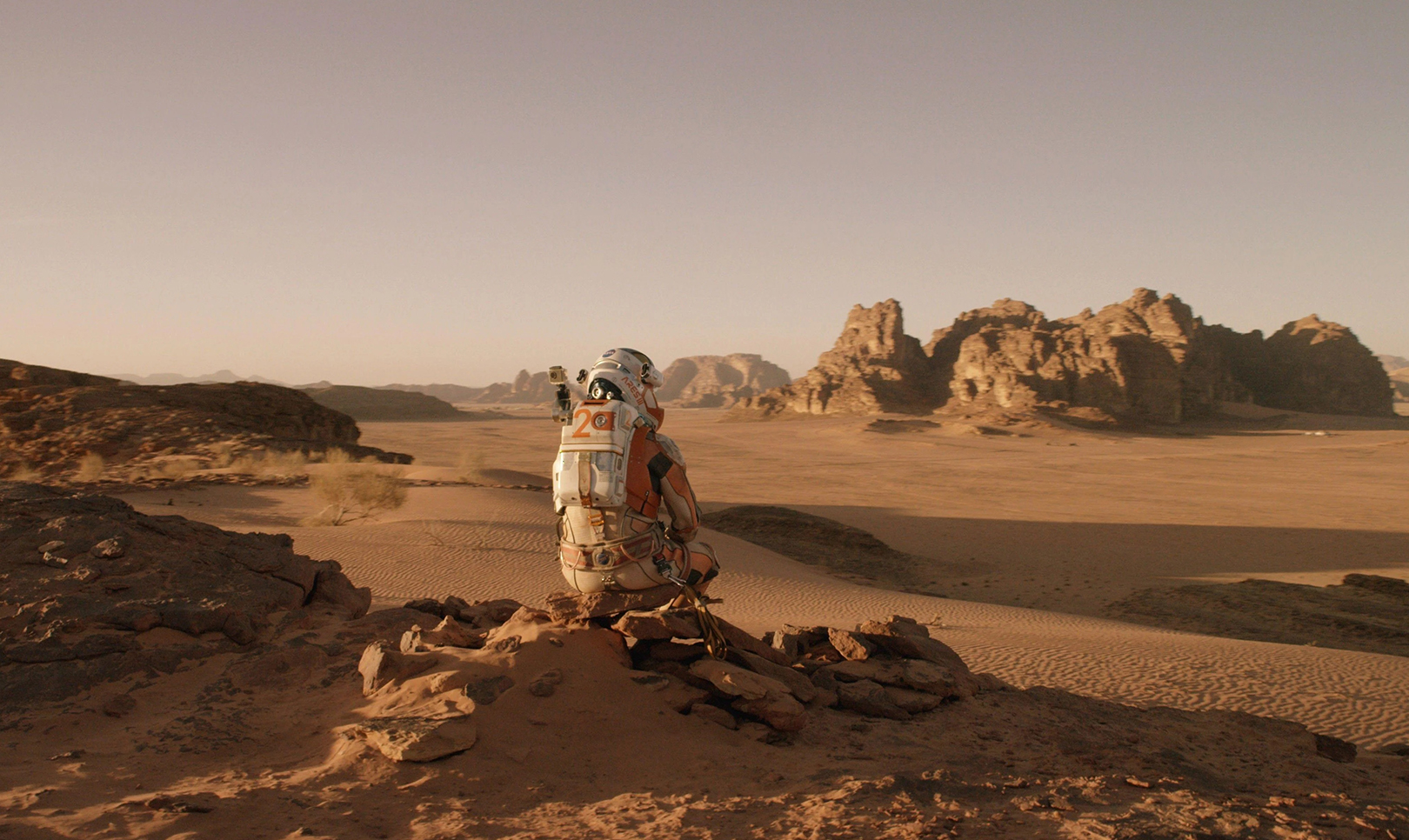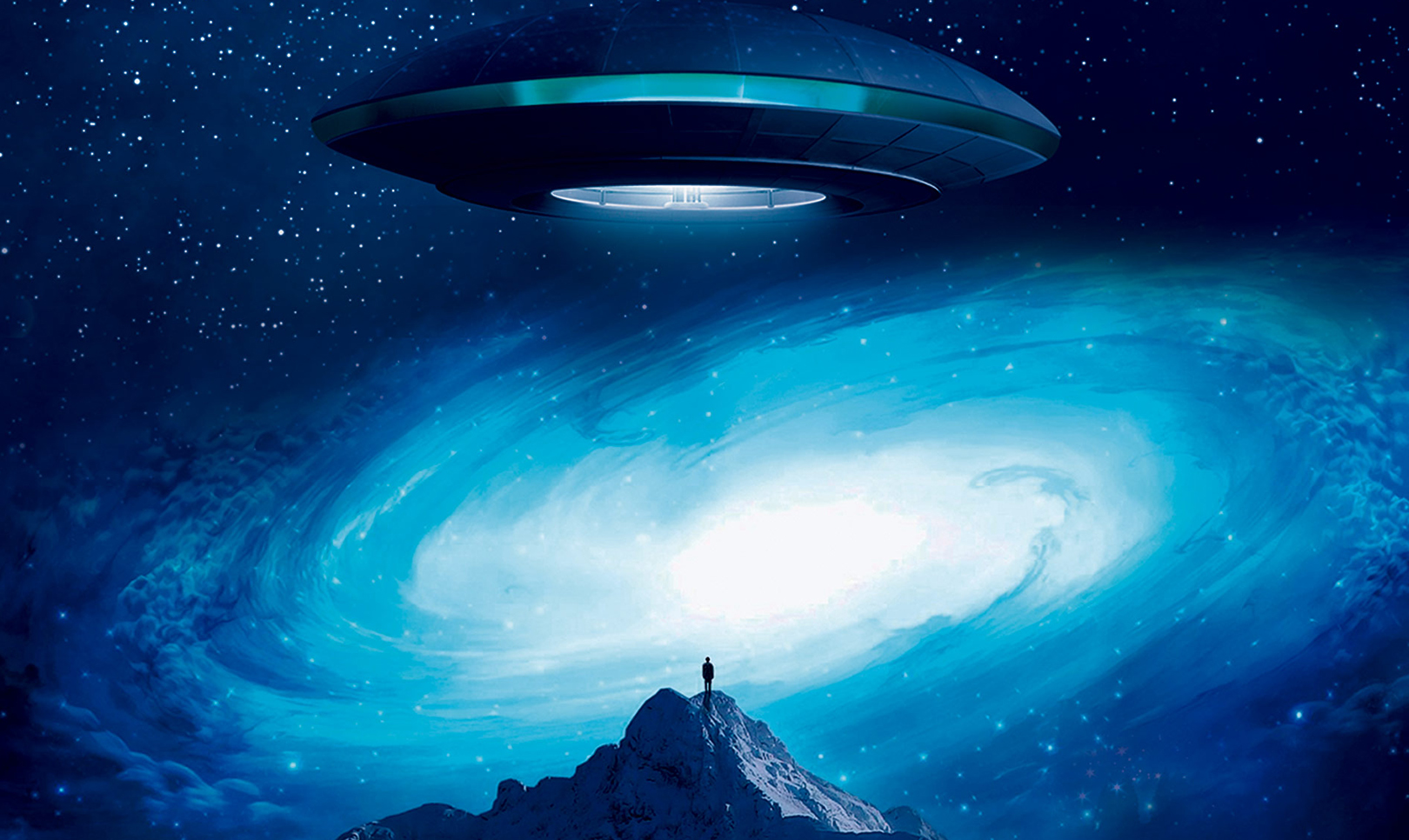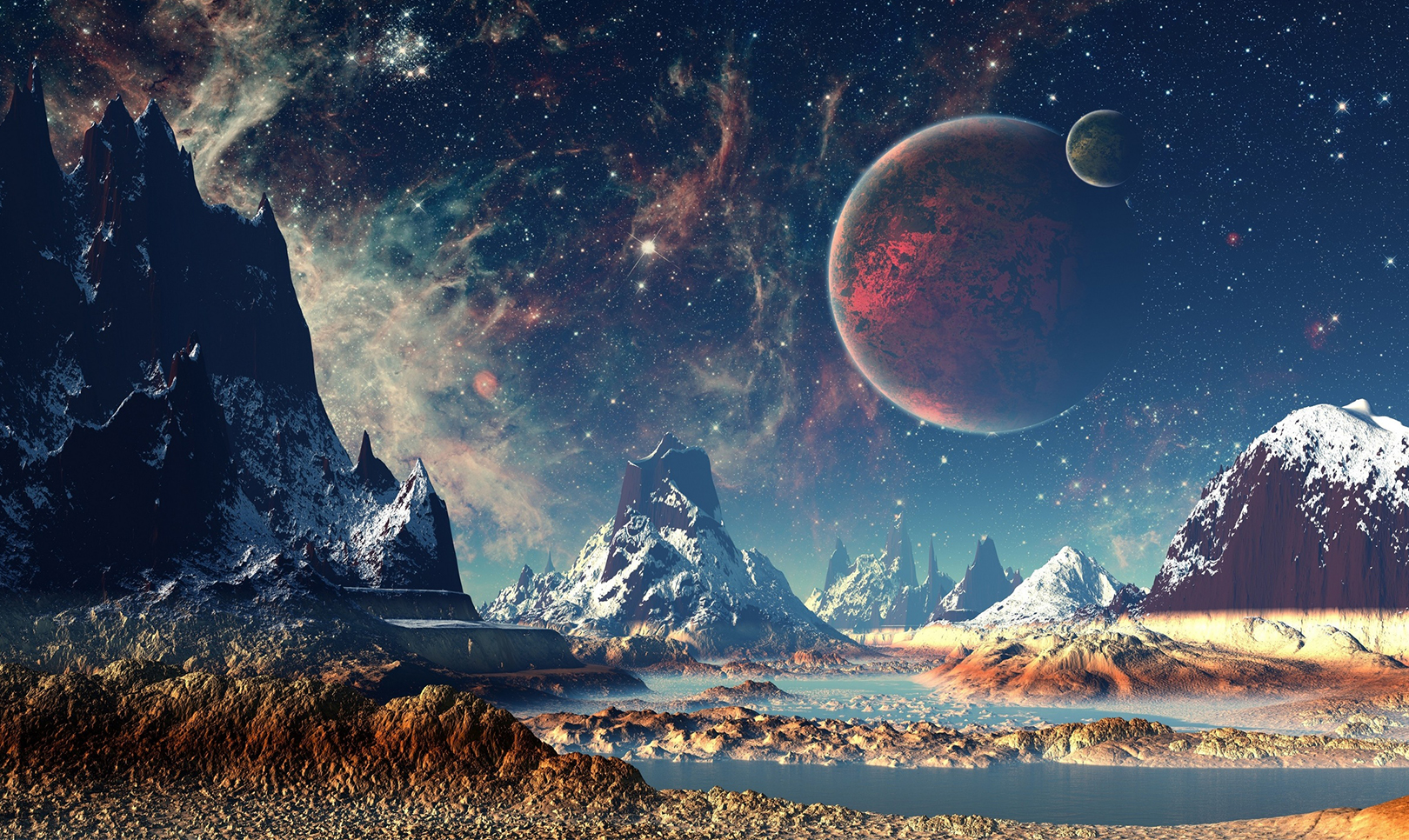Journalist Gabriela Ruic from Exame Magazine, this week made an interesting article about the research technologies already available in relation to life on the planet Mars, based on the film The Martian , directed by Ridley Scott and starring Matt Damon, released last week , on October 3, 2015.
Even though it remains limited to the materiality of the subject and is only a first step, science already demonstrates knowledge that, until then, was totally unknown to the general public regarding possible human life outside the earth. The next steps will surely be knowledge of the other dimensions of life on that planet and on others as well.
We have recently seen in the book Os Abduzidos , by Ângelo Inácio, psychography by Robson Pinheiro, Casa dos Espíritos Editora, the great influence and action of beings from other planets on our life on earth.
What most caught my attention in the film was that, at a time of great complexity in the plot, the main character, starring Matt Damon, finds himself alone on Mars without his traveling companions and overcomes his intellectual, physical capacities and emotional when finding a way out of that planet, with the support of technicians on earth. For those of us who study subjects of various dimensions and life on other planets in our Collegiate, we can observe that despite being fiction, the work brings many interesting things for our reflection and study.
From a spiritual point of view, for example, we know of the existence of life on Mars in the etheric range and, therefore, full of life even if not visible to the human eye. If the character had knowledge of this life, he would be much more open to the intuitions he would receive from the inhabitants of Mars to quickly get out of the situation he was in. We hope that in the near future we can see on screens a more spiritual approach and in line with cosmic science, which we received preliminary fragments through books like Os Abduzidos.
See the article by journalist Gabriela Ruic:
Although categorized as fiction, the feature unites its narrative with real elements from the American space agency ( NASA ) evaluated the film and listed some of the technologies that appear on the big screen, but which have already materialized or are in full development by scientists. See five of them below:
1 – The habitat
Stranded on Mars, Whatney spends most of his time in “The Hab”, a kind of house that aims to protect explorers from the hostile and extreme conditions of Mars. In real life, explains NASA, “The Hab” is called “Hera” (Human Exploration Research Analog) and is developed at the Johnson Space Center.
According to the agency, “Hera” is a two-story environment that has spaces for rest, work and hygiene. There, scientists carry out operational tests and carry out 14-day journeys to simulate future missions in isolated locations. The research, continues NASA, aims to evaluate human behavior in these conditions and will also help in the development of these operations.
2 – The plantation
The agency explains that, today, astronauts on the International Space Station (ISS) receive supplies through ships designed specifically for this type of support. “On Mars, humans could not rely on missions to deliver supplies from Earth,” NASA recalls. “To survive, they will have to plant”.
Because the agency’s astronauts already have a system capable of producing vegetables outside the Earth, the “Veggie”. In August, the crew dined on a plate of red lettuce grown by them inside the station and it was the first time in history that humans ate food produced in space.
“Veggie” uses a kind of seed pillow that is then placed under red and blue lights emitted by LED lamps. The system has been growing vegetables since 2014, but the plants were brought back to Earth for analysis.
The idea going forward, explains the agency, is for “Veggie” to expand its capabilities so that it will be possible to produce other types of food that will meet the nutritional needs of humans involved in long-term missions.
3 – Space suits
Hostile as it is, the environment of Mars demands that its explorers be dressed for their weather. To that end, in the film, Whatney spends his days on the red planet in a suit good enough for long walks. “Therefore, your suit must be flexible, durable and reliable”, assesses NASA.
There are different projects for suits being developed by the agency, but they all take into account situations that involve everything from walking to movements for the astronaut to bend down to pick up something from the ground.
One challenge is dealing with dust from the planet’s surface. “The red soil from Mars can affect astronauts and systems inside a spacecraft if taken inside.” To this end, scientists are studying a way for a person to get inside the ship, leaving the suit outside.
4 – Rover
The idea of NASA’s mission to Mars is that, once there, the team stays for twelve months until the alignment of the planets allows the journey back to Earth to be shorter. “This will give astronauts enough time to carry out their experiments and to explore their surroundings.” But the idea is that they are not limited to a certain distance.
For this reason, a robust, agile and versatile vehicle is needed, like the one used by Whatney in the film. Today, the agency works on the Multi-Mission Space Exploration Vehicle (MMSEV), which has already been used on similar missions. The technologies of this rover are developed with the aim of using it in all types of operations: from landing on asteroids to exploring Mars and its moons.
5 – Water
A few weeks ago, the agency announced that it had discovered evidence that the red planet has liquid water, a fundamental element for life. “The presence of liquid water on the surface of Mars points to environments that are more habitable than previously thought,” said one researcher at the time of the announcement.
In the film, the astronaut team does not waste a single drop and depends on a kind of treatment plant to guarantee the supply of drinking water. In real life, this is done on the ISS through the Water Recovery System.
With this system, explains NASA, sweat, urine and even tears are recovered and transformed into water ready for consumption. “Today’s coffee will be tomorrow’s coffee”, joked an astronaut from the agency on board the ISS.
But research in this field is far from complete. According to the agency, other water treatment technologies are under development and the idea is that the crews of long-term missions are independent of replenishing supplies from Earth.
That’s it friends, fiction is getting closer and closer to the bigger, more comprehensive and real. We have to be patient until we are ready for the new forms of life, thus expanding our awareness… but we are on the right track!
Ronaldo Albertino Member of the Board of Guardians in São Paulo.
Join the Guardians of Humanity Program
Image credit illustrating the publication: Scene from the movie Lost on Mars – Publicity – Scott Free Productions – Distributed by 20th Century Fox
Read too:
Extraterrestrial life in the work of Allan Kardec and Chico Xavier






